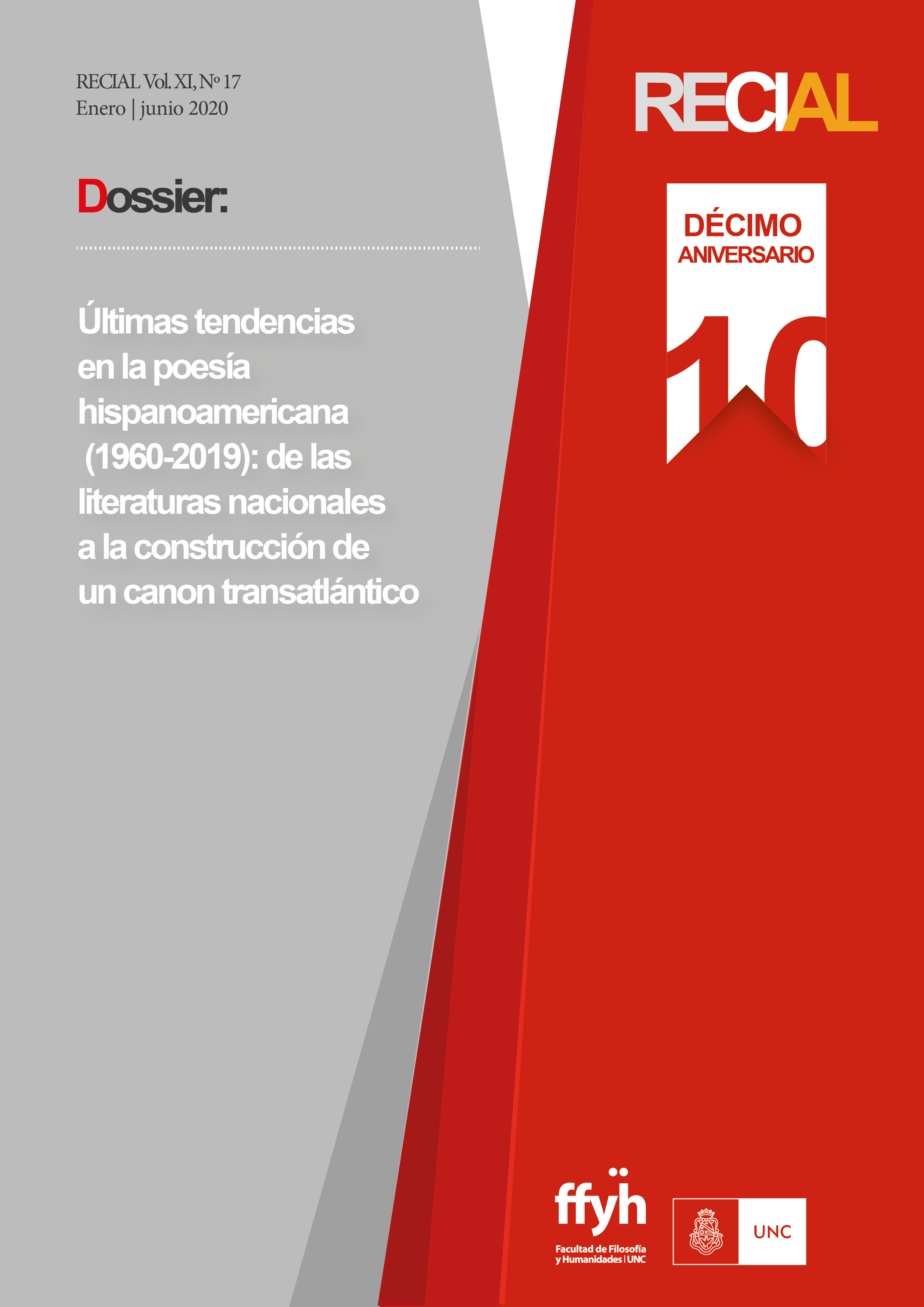Dear villa: The marginalist ecstasy on television and in the argentine narrative in the zero years
DOI:
https://doi.org/10.53971/2718.658x.v11.n17.29426Keywords:
aestheticization, argentine narrative, marginality, mass medi, villa miseriaAbstract
In the months before December 2001 and even in a stronger way in the years that
follow, a significant interest in social exclusion seems to increase and take over
journalistic micros, series and documentaries in Argentine televisión. At the same time,
different cultural manifestations like the cinema and cumbia undertake the task of
narrating the routine of those that live in the urban periphery. The fenomenon has its
replica in literary fiction and thus many writers of the new generations begin to chronicle the social emergency in their narratives and focus their attention on the space
of villa miseria. Among these texts there can be found Cuando me muera quiero que me
toquen cumbia. Vida de pibes Chorros (2003) by Cristian Alarcón, Santería (2008) and
Sacrificio (2010) by Leonardo Oyola and La virgen cabeza (2009) by Gabriela Cabezón
Cámara. Closer to fascination than to political denounciation, literature will sway
between the aesthetization of desperate delinquency and the bizarre celebration of
marginality. Such options bring together the narrative to the show put on by television
programmes such as Policías en acción or Crónica TV reports.
Downloads
References
Alarcón, C. (2003). Cuando me muera quiero que me toquen cumbia. Vida de pibes chorros. Argentina: Norma.
Amado, A. (2009). La imagen justa. Cine argentino y política 1980-2007. Argentina: Colihue.
Bernabé, M. (2010). Sobre márgenes, crónica y mercancía. Boletín, (15), 1-17. Recuperado de http://179.43.112.212/webapp-storage/adjuntos/43652-Bernabe,%20M%C3%B3nica-%20Sobre%20M%C3%A1rgenes,%20Cr%C3%B3nica%20y%20Mercanc%C3%ADa%20(completo).pdf
Blajaquis, C. (2010). La venganza del cordero atado. Argentina: Continente.
Cabezón Cámara, G. (2009). La virgen cabeza. Argentina: Eterna Cadencia.
Cellino, R. (2013). La lógica del espectáculo en las crónicas literarias del presente. En Actas del III Congreso Internacional “Cuestiones Críticas”. Rosario, Argentina: FHyA, UNR. Recuperado de http://www.celarg.org/trabajos/cellino_reginocc.pdf
Cucurto, W. (2003). Cosa de negros. Argentina: Interzona.
Fariña, O. (2011). El guacho Martín Fierro. Argentina: Factotum.
Lewis, O. (1978). Los hijos de Sánchez. México: Joaquín Mortiz.
Margulis, M. (1968). Migración y marginalidad en la sociedad argentina. Argentina: Paidós.
Martin, E. (2011). La cumbia villera y el fin de la cultura del trabajo en la Argentina de los años ‘90. En P. Seman y P. Vila (Eds.), Cumbia: nación, etnia y género en Latinoamérica (pp. 209-244). Argentina: Gorla-EPC. Recuperado de https://www.researchgate.net/publication/28239026_La_cumbia_villera_y_el_fi n_de_la_cultura_del_trabajo_en_la_Argentina_de_los_90
Moraña, M. (2013). Documentalismo y ficción: testimonio y narrativa testimonial hispanoamericana en el siglo XX. En A. Pizarro (Ed.), América Latina: palabra, literatura y cultura (pp. 113-150). Chile: Universidad Alberto Hurtado.
Oyola, L. (2008). Santería. Argentina: Aquilina.
Oyola, L. (2010). Sacrificio. Argentina: Aquilina.
Ratier, H. (1971). Villeros y villas miserias. Argentina: Centro Editor de América
Latina.
Rotker, S. (1992). La invención de la crónica. Argentina: Letra Buena.
Scobie, J. (1977). Buenos Aires. Del centro a los barrios, 1870-1910. Argentina: Solar.
Sebreli, J. J. (1965). Buenos Aires, vida cotidiana y alienación. Argentina: Siglo Veinte.
Spivak, G. C. (2011). ¿Puede hablar el subalterno? Argentina: El cuenco de plata.
Viñas, D. (1973). Armando Discépolo: inmigración, grotesco y fracaso. Argentina: Corregidor.
Walsh, R. (1994). Operación masacre. Argentina: Planeta.
Published
How to Cite
Issue
Section
License

This work is licensed under a Creative Commons Attribution-NonCommercial-ShareAlike 4.0 International License.
Aquellos/as autores/as que tengan publicaciones en esta revista, aceptan los términos siguientes:
- Los/as autores/as conservarán sus derechos de autor y garantizarán a la revista el derecho de primera publicación de su obra, el cuál estará simultáneamente sujeto a la Licencia de reconocimiento de Creative Commons que permite a terceros compartir la obra siempre que se indique su autor y su primera publicación esta revista.
- Los/as autores/as podrán adoptar otros acuerdos de licencia no exclusiva de distribución de la versión de la obra publicada (p. ej.: depositarla en un archivo telemático institucional o publicarla en un volumen monográfico) siempre que se indique la publicación inicial en esta revista.
- Se permite y recomienda a los/as autores/as difundir su obra a través de Internet (p. ej.: en archivos telemáticos institucionales o en su página web), luego de su publicación en la revista. (Véase El efecto del acceso abierto).























